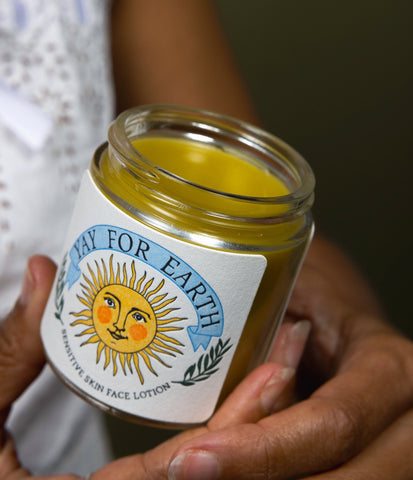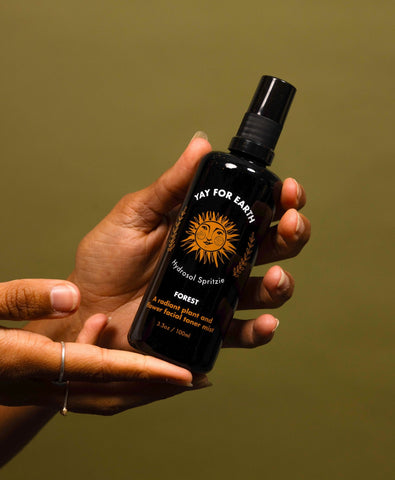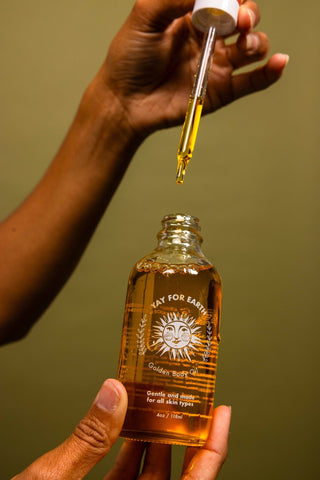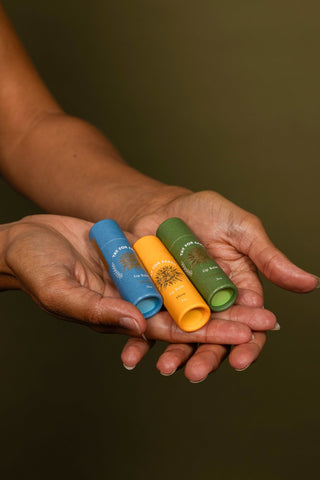SIf you've ever stood in your bathroom holding a bottle of toner and a jar of moisturizer, wondering which one goes first, you're definitely not alone. The skincare world has managed to make something as simple as "what order should I put these on my face" into a surprisingly controversial topic.
Here's the thing: half the beauty influencers say toner first, the other half insist moisturizer comes before everything else, and meanwhile, your skin is just sitting there wondering why you're overthinking what should be a pretty straightforward process.
The truth is, the order you apply your skincare products can make a genuine difference in how well they work. When you get the layering right, each product can do its job properly instead of sitting on top of your skin looking confused.
Let's clear up the confusion once and for all.
The Science Behind Skincare Layering
Before we dive into the toner-versus-moisturizer debate, let's talk about why order matters. Your skin isn't just a flat surface – it's a sophisticated barrier system with specific ways of absorbing products.
Molecular Size Matters
Think of skincare like a crowded subway entrance. Smaller molecules slip through gaps more easily than larger ones. Toners contain smaller molecules that penetrate skin readily. Moisturizers contain larger molecules designed to create a protective barrier on your skin's surface.
Apply the heavy moisturizer first, and you create a wall preventing smaller toner molecules from reaching your skin.
pH Balance and Penetration
Your skin naturally maintains a slightly acidic pH of around 5.5. Most toners work within this range, while moisturizers are often pH-neutral. Toner first helps balance your skin's pH after cleansing, creating the ideal environment for subsequent products.
Moisturizers create a protective barrier – literally their job. This barrier function protects skin but makes it harder for other products to penetrate effectively. Apply toner after moisturizer, and you're asking it to work through this protective layer.

Toner Before or After Moisturizer: The Definitive Answer
Ready for the straightforward answer? Toner goes before moisturizer. Always.
The logical progression:
Step 1 - Cleanse to remove dirt, oil, and yesterday's products
Step 2 - Tone to balance pH and prep skin
Step 3 - Treat with serums (if using any)
Step 4 - Moisturize to hydrate and seal everything in
Step 5 - Protect with sunscreen during the day
This follows the basic principle: thinnest to thickest consistency, smallest to largest molecules.
Why This Order Works
Toner gets direct access to freshly cleansed skin. It balances pH, removes stubborn impurities, and delivers active ingredients where needed.
Moisturizer applied on top seals in toner benefits while providing hydration and protection. It creates a barrier that prevents toner benefits from evaporating throughout the day.
The Rare Exception
The only scenario for moisturizer-first is extremely sensitive skin using a very gentle toner, where the moisturizer provides a protective buffer. But honestly? Choose a gentler toner instead of working backwards.
Why Most People Get This Wrong
The Harsh Toner Legacy
For decades, toners were essentially rubbing alcohol with fancy labels. These stripping formulations left skin tight and irritated, so experts recommended moisturizer first as protection. The advice stuck around even as toners evolved into gentler, beneficial formulations.
Social Media Confusion
Influencers share personal routines without explaining they might be using treatment-strength toners requiring buffering, or have specific skin conditions needing modified application. Followers adopt these techniques without understanding the context.
Marketing Chaos
Some brands deliberately create confusion about application order to encourage buying multiple products. Others market "rule-breaking" approaches as revolutionary, even when traditional methods work better.
Multi-Step Overwhelm
As routines became increasingly complex, basic application principles got lost. When managing serums, essences, and treatments, the simple toner-moisturizer question feels impossibly complicated.
Skin Type Variables That Change the Rules
While toner goes before moisturizer regardless of skin type, your specific needs influence how you approach this layering.
Oily and Acne-Prone Skin
Don't skip moisturizer after using mattifying toner – this often triggers more oil production. For oily skin, the toner-first rule becomes crucial because active ingredients like salicylic acid need direct skin access to work effectively.
Dry and Mature Skin
If toner makes your skin feel tight before moisturizer, choose a hydrating toner rather than reversing application order. Anti-aging toners with antioxidants or gentle acids need to penetrate deeply, making the standard order essential.
Sensitive and Reactive Skin
Heightened sensitivity doesn't change application order – it requires gentler product choices. Look for alcohol-free toners without strong fragrances or high active concentrations. A gentle, pH-balancing toner before soothing moisturizer actually helps reduce sensitivity over time.
Combination Skin
Different facial zones have different needs, but using different application orders becomes impractical. Stick with toner-first across your face, varying amounts instead – more toner in oily areas, more moisturizer on dry zones.
Common Myths About Skincare Order (And Why They're Wrong)
Let's bust some persistent myths that keep people confused about proper skincare layering.
Myth: Expensive Products Work Better in Any Order
Price doesn't override the laws of chemistry. A $200 toner applied over moisturizer will still struggle to penetrate that protective barrier, while a $50 toner applied first might work beautifully. Quality matters, but physics matters more.
Expensive products often contain higher concentrations of active ingredients, which makes proper application order even more critical. You're literally wasting money when you don't let these premium formulations reach your skin effectively.
Myth: More Steps Always Equal Better Results
The beauty industry loves to convince you that complexity equals effectiveness, but your skin often prefers simplicity. Adding more products increases the chances of ingredient conflicts, pH imbalances, and application errors.
READ MORE ABOUT MINIMAL SKINCARE ROUTINES
Three products used correctly will always outperform ten products used haphazardly. Your skin can only absorb so much at once – excess just sits on the surface, potentially clogging pores or causing irritation.
Myth: Natural Products Don't Need Proper Layering
"Natural" doesn't mean "foolproof." Natural oils still have molecular weights, natural acids still have pH levels, and natural ingredients can still conflict with each other when applied incorrectly.
If anything, natural products often work better when applied in proper order because they're designed to work with your skin's natural processes rather than overpowering them.
Myth: Skin Type Determines Application Order
While skin type affects which products you choose, it doesn't change the basic physics of skincare layering. Oily skin, dry skin, sensitive skin – they all benefit from the same logical progression: thinnest to thickest, most active to most protective.
The myth persists because people confuse product selection with application technique. Your skin type should guide what you use, not how you use it.
Myth: You Can "Train" Your Skin to Accept Wrong Order
Your skin doesn't "get used to" poor application techniques – it just stops showing obvious signs of irritation while operating at suboptimal levels. You might think backwards layering is working because you're not breaking out, but you're not getting maximum benefit from your products.
Proper layering isn't about training your skin; it's about working with your skin's existing capabilities.

Application Techniques That Maximize Results
Knowing the right order is half the battle – proper application technique makes the difference between products that work and products that just sit on your skin.
Toner Application Methods
Spray Method: Facial toners that are delivered in a hydrosol mist allow for the best overall coverage and easy application.
Gentle Press Method: Pour a nickel-sized amount into palms, press into skin from center outward. Wastes less product and can be gentler than cotton pads.
Cotton Pad Sweep: Use soft pads that won't shed fibers. Soak thoroughly but not dripping, use gentle upward motions. Don't rub or scrub.
Timing Matters
Let toner absorb 30-60 seconds before moisturizer. Your skin should feel slightly damp, not wet, when applying moisturizer. This residual moisture helps moisturizer spread easily and improves absorption.
Moisturizer Strategy
Apply using gentle upward motions after toner absorbs. Start with a small amount – you can always add more. The "wet skin moisturizing" technique (applying to slightly damp skin from toner) increases hydration and effectiveness.
SHOP THE BEST FACE TONER
Troubleshooting When Things Go Wrong
Even with perfect order and timing, sometimes products don't cooperate. Here's how to solve common layering problems.
When Products Won't Absorb
- Using too much product (start with less)
- Compromised skin barrier (focus on gentle, repairing ingredients)
- Product incompatibility (some combinations don't work together)
- Environmental factors (high humidity slows absorption)
Pilling Problems Those annoying product balls form when:
- Applying products too quickly (allow more absorption time)
- Formulations don't work together
- Products are expired or degraded
- Wrong technique (try pressing instead of rubbing)
Irritation After Layering
- Check for ingredient sensitivities
- Reduce product amounts
- Consider pH conflicts between products
- Assess skin barrier health
Products Not Working Effectively
- Verify correct application order
- Evaluate product quality
- Consider seasonal skin changes
- Allow 4-6 weeks for visible results
Seasonal Timing Tips That Make a Real Difference
Your skin's needs change with the seasons, and so should your application timing and techniques. Understanding these changes helps you get better results year-round.
Spring Transitions: When Your Skin Wakes Up
As humidity increases and temperatures warm up, your skin often becomes more receptive to products. This is the perfect time to reassess your routine if winter left you feeling like nothing was working.
Spring absorption tends to be faster, so you might need less time between toner and moisturizer application. Your skin is also shedding winter's accumulated dead cells, making this an ideal time to ensure your toner is actually reaching fresh skin.
Many people find they can switch to lighter formulations in spring without sacrificing hydration. If your winter moisturizer starts feeling heavy, this confirms your skin's seasonal adaptation is working properly.
Summer Adjustments: Working with Heat and Humidity
High humidity can dramatically slow product absorption, which means you need more patience between application steps. That 30-second wait between toner and moisturizer might need to extend to 2-3 minutes in July.
Heat also makes your skin produce more oil, which can create a barrier that prevents toner penetration. Consider doing your main skincare routine in air conditioning when possible, or switch to evening-only application if morning products don't seem to absorb.
Summer is when you'll really notice the difference between quality formulations and cheap ones. High-quality products maintain their effectiveness even in challenging weather, while lower-grade formulations might become sticky or ineffective in heat.
Fall Preparation: Getting Ready for Dryness
As humidity drops and temperatures cool, your skin begins preparing for winter's challenges. This transition period is crucial for establishing routines that will carry you through harsh weather.
Fall is when you might need to increase application amounts or frequency, but maintain the same order. Your toner becomes even more important as it helps prepare increasingly dry skin to actually absorb your moisturizer.
This is also the season to pay attention to indoor heating starting up. Forced air systems can dry out your skin faster than you realize, making proper product penetration essential.
Winter Survival: Maximum Hydration Strategies
Cold outdoor air and dry indoor heating create the perfect storm for compromised skin barriers. Proper toner-first application becomes absolutely critical because damaged barriers struggle to retain moisture.
Winter timing often requires the most patience. Cold skin absorbs products more slowly, so allow extra time between steps. Your skin should feel completely comfortable with your toner before adding moisturizer – rushing this step in winter often leads to products sitting on the surface.
Consider the "layering technique" in extreme winter conditions: toner, light moisturizer, wait, then additional moisturizer. This builds hydration gradually while maintaining proper application order.
Humidity's Hidden Effects on Timing
Low humidity (below 40%) speeds up product absorption but also increases evaporation from your skin's surface. You might need to apply products more quickly in sequence to prevent the toner from evaporating before you can seal it with moisturizer.
High humidity (above 70%) slows absorption significantly. Products that normally absorb in 30 seconds might need several minutes. Don't assume your products aren't working – they just need more time in humid conditions.
Temperature Impact on Product Effectiveness
Room temperature affects how well products spread and absorb. Cold products (stored in cool bathrooms) spread less evenly and absorb more slowly. Warm products (from heated bathrooms) spread easily but might feel less refreshing.
If you're having absorption issues, try warming products slightly between your palms before application. This simple step can dramatically improve how well toner spreads and penetrates, especially in cooler weather.
Building Your Complete Routine with Proper Order
Understanding where toner and moisturizer fit helps you make better decisions about timing and product selection.
Morning Framework
- Gentle cleanse (or just water for non-oily skin)
- Toner to balance and refresh
- Treatment products like vitamin C (if using)
- Moisturizer for hydration and protection
- Sunscreen
Evening Structure
- Thorough cleanse
- Toner to balance and prep
- Treatment products like retinol
- Moisturizer to seal and hydrate
Evening routines can handle richer products and longer absorption times since you're not rushing to apply makeup or sunscreen.
Weekly Treatment Integration
Weekly treatments (masks, intensive serums) typically go after cleansing but before toner. This lets treatments work on clean skin while still benefiting from toner's pH balancing.
Lifestyle Adaptation
Your routine should work with your lifestyle. If mornings are rushed, do most treatments in the evening. Consistency beats perfection – a simple routine followed regularly always outperforms a complex one done sporadically.

Making Smart Product Choices That Work Together
Product quality and compatibility matter as much as proper application order. Understanding what makes products work well together helps you build a more effective routine.
Why Quality Formulations Matter
High-quality products work harmoniously with your skin's natural processes rather than fighting against them. When formulated with compatible ingredients and appropriate pH levels, layering becomes simpler and more effective.
Small-batch, handcrafted skincare often provides better ingredient synergy because formulators can focus on quality and compatibility rather than mass production efficiency.
SHOP SMALL BATCH SKIN CARE
Multi-Functional Benefits
Modern skincare is moving toward products that serve multiple purposes, reducing complex layering needs. A well-formulated product might provide hydration, barrier protection, and treatment benefits in one application.
This approach recognizes that skin health often improves with gentler, supportive care rather than aggressive intervention. When products work with your skin's natural functions, you typically see better long-term results.
The Philosophy of Simplified Skincare
Sometimes the most effective approach is also the simplest. Instead of layering multiple products with complex interactions, consider formulations that combine benefits in one step.
Yay for Earth has found something special. Our philosophy of "hello skincare, meet nature" recognizes that effective skincare doesn't have to be complicated. When founder Stevie was dealing with sensitive skin challenges, she discovered that thoughtfully chosen ingredients could provide comprehensive benefits without complex routines.
Choosing Compatible Products
When you do layer products, look for formulations designed to work together. Products with similar pH levels tend to play nicely together, while very different pH levels might cause pilling or reduced effectiveness.
Companies that build relationships directly with their ingredient suppliers can ensure ingredient quality and freshness that translates to more effective skincare and better product compatibility.
When Simple Ingredients Create Powerful Results: A Real-World Example
Understanding the right application order becomes even more important when you're using thoughtfully formulated products that work in harmony with your skin.
Take Yay for Earth's approach to the toner-moisturizer combination. Our Hydrosol Spritzie and Sensitive Skin Face Lotion demonstrate exactly why the proper order matters – and why quality ingredients make such a difference.
SHOP THE BEST ORGANIC FACE TONER
The Toner: Forest Hydrosol Spritzie
This calming natural toner is made by steam-distilling plants, botanicals, and barks in small batches. Unlike harsh, alcohol-based toners from the past, this hydrosol is sourced from a steam distiller and herbalist in BC, Canada, who harvests only once or twice a year to ensure ethical practices and peak quality.
Applied first on clean skin, the hydrosol's small molecules penetrate readily to tone, refresh, and soothe. Customers have found it particularly effective for relieving itchiness, bites, and calming skin irritation – benefits that would be significantly reduced if applied over a protective moisturizer layer.
The steam distillation process creates a product that naturally aligns with your skin's pH, preparing it perfectly for the next step. As one customer noted, it "smells like you entered a rainy forest" – that fresh, botanical character comes from pure ingredients rather than synthetic fragrances.

The Moisturizer: Sensitive Skin Face Lotion
After the hydrosol absorbs (remember that 30-60 second wait!), the Sensitive Skin Face Lotion provides the protective, nourishing seal your skin needs. Despite its rich, nutrient-dense formulation, you only need a pea-sized amount because the hydrosol has already primed your skin to absorb effectively.
The lotion contains just four powerhouse ingredients: regeneratively grown olive oil from California, local beeswax from beekeeper Beth, organic shea butter, and pomegranate seed oil. Each ingredient is carefully sourced from farmers who prioritize land health – no compromises.
This simple formulation creates a protective barrier that seals in the hydrosol's benefits while delivering anti-inflammatory and healing properties. Customers rave about using it for everything from everyday facial care to healing tattoos, soothing bug bites, and even treating babies' sensitive skin.
SHOP THE BEST SENSITIVE SKIN FACE LOTION
Why This Pairing Works So Well
The combination demonstrates several key principles we've discussed:
Molecular progression: The hydrosol's small molecules penetrate first, followed by the lotion's larger, protective molecules that create a barrier to lock everything in.
pH compatibility: Both products work with your skin's natural pH rather than disrupting it, making them ideal for sensitive skin that reacts poorly to harsh formulations.
Quality over complexity: Four carefully chosen ingredients in the lotion, paired with pure steam-distilled hydrosol, deliver results that complicated multi-step routines often can't match.
Proper timing matters: Users who spray the hydrosol first and wait before applying lotion report better absorption and effectiveness than those who rush through the steps.
FAQs for Toner and Moisturizer
Should I wait between applying toner and moisturizer, and if so, how long?
Yes, you should allow your toner to absorb before applying moisturizer, but you don't need to wait until your skin is completely dry. Generally, 30-60 seconds is sufficient – your skin should feel slightly damp but not wet when you apply your moisturizer. This timing allows the toner to penetrate while the residual moisture helps your moisturizer absorb better.
Can I skip toner and just use moisturizer if I'm in a hurry?
Absolutely! While the ideal routine includes both steps, moisturizer is generally more essential for daily skin health than toner. If you're consistently short on time, consider switching to a multi-functional product that combines toning and moisturizing benefits rather than trying to rush through both steps.
What if my toner and moisturizer seem to pill or ball up when I layer them?
Pilling usually indicates product incompatibility or application timing issues. Try allowing more time between applications, using smaller amounts of each product, or switching to pressing motions instead of rubbing. If the problem persists, the products may not be formulated to work well together.
Is the order different for different skin types?
The basic order (toner before moisturizer) remains the same regardless of skin type, but you might adjust the specific products and amounts. Oily skin might use more toner and lighter moisturizer, while dry skin might use hydrating toner and richer moisturizer. The layering principle doesn't change.
Can I use different toners in the morning versus evening?
Yes, many people use different toners for morning and evening routines. You might use a gentle, hydrating toner in the morning and a treatment toner with active ingredients in the evening. Just maintain the same application order – toner before moisturizer – regardless of which toner you're using.
What should I do if my skin feels tight or dry after applying toner?
If your toner leaves your skin feeling tight or dry, it's likely too harsh for your skin type. Switch to a gentler, more hydrating formulation rather than trying to fix the problem by changing your application order. Your toner should prepare your skin for moisturizer, not create additional dryness.
Do I need to use a cotton pad with toner, or can I apply it with my hands?
Both methods work well – choose based on your preference and skin sensitivity. Cotton pads can provide gentle exfoliation and ensure even application, while hands waste less product and can be gentler for sensitive skin. If you use cotton pads, choose soft, high-quality ones that won't irritate your skin.
How do I know if I'm using too much or too little of each product?
For toner, you should use enough to lightly dampen your entire face – usually about a nickel-sized amount in your palms or enough to thoroughly wet a cotton pad without dripping. For moisturizer, start with a pea-sized amount and add more if needed. Your skin should feel comfortable and hydrated, not greasy or tight.
Disclaimer
The information provided in this article is for educational and informational purposes only and is not intended as medical advice. Individual skin responses to skincare products and application techniques can vary significantly based on skin type, sensitivity, environmental factors, and personal health conditions.
While the general principle of applying toner before moisturizer works well for most people, those with specific skin conditions such as severe acne, rosacea, eczema, or other dermatological concerns should consult with a qualified dermatologist before making changes to their skincare routine. Professional medical advice is particularly important if you're currently using prescription skincare treatments that may require specific application orders.
Always perform patch tests when introducing new products or changing your application routine, especially if you have sensitive or reactive skin. Discontinue use immediately if you experience irritation, unusual reactions, or worsening of existing skin conditions. Allow 4-6 weeks of consistent use to properly evaluate the effectiveness of any routine changes.






